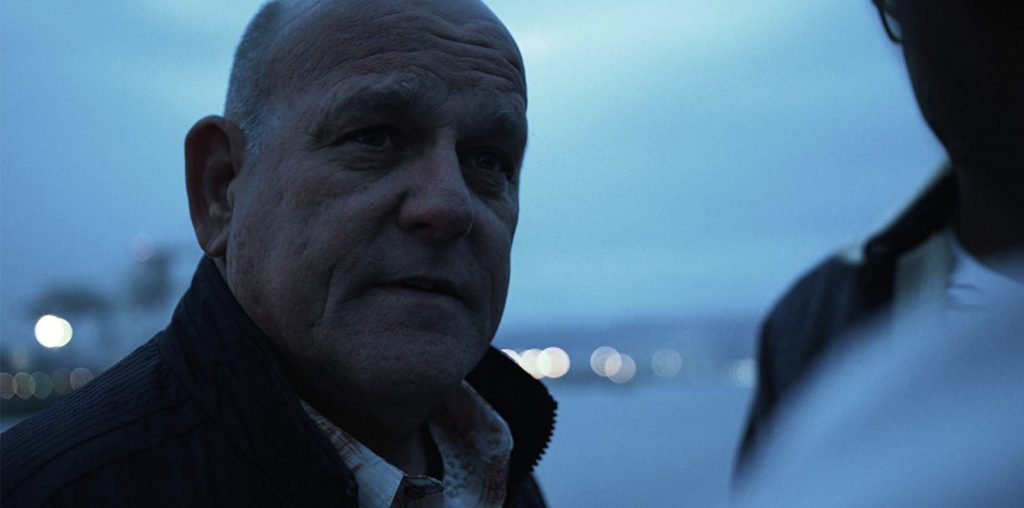
BOOTLEG FILES 428: “Bala” (1976 documentary short directed by Satyajit Ray).
LAST SEEN: The film is on YouTube.
AMERICAN HOME VIDEO: None.
REASON FOR BOOTLEG STATUS: A very rare film created by one of the global cinema’s most elusive talents.
CHANCES OF SEEING A COMMERCIAL DVD RELEASE: Unlikely, at least in the U.S.
Locating films created by the great Indian director Satyajit Ray is no mean feat. Although widely recognized as being among the greatest filmmakers in cinema history, the vast majority of the 37 films directed by Ray are not easily accessible for current review.
Thus, I was very happy to learn that a website called Minai’s Cinema Nritya Gharana had tracked down a copy of one of Ray’s least-known works: the 1976 documentary short “Bala.” The good news is that this rare film can now be seen on YouTube. The bad news is somewhat more surprising – “Bala” is not a great movie.
The subject of “Bala” is Balasaraswati (1918-1984), the celebrated dancer who was considered the greatest artist of Bharata Natyam, a classical dance form from the South Indian state of Tamil Nadu. Despite her great fame, Balasaraswati’s career-peak performances were not recorded on film until 1962, when a film crew associated with Wesleyan University aimed their camera at her.
Ray first saw Balasaraswati in performance when he was 14. After he established his career as a filmmaker, he intended to create a documentary on her life and work. Production was supposed to begin around 1966, but the project abruptly fell through. Ten years would pass before Ray received funding from the Tamil Nadu government and the National Centre for Performing Arts in Calcutta to produce his 33-minute film.
The first part of the film offers a crash course in Bharata Natyam, with the subject showing how mime and hand gestures are incorporated into the performance. Next comes an equally rabid biography of the film’s subject, which offers the scantest of life highlights with no depth on education, training or career trajectory.
Ray allows Balasaraswati to perform one of her best-known pieces, “Krishna Ne Begane Baro,” but he curiously stages it along a beach. The effect is very peculiar, to say the least, since it has no oceanic connection. Balasaraswati tries not to look uncomfortable, even as ocean breeze blows her clothing.
“Bala” then briefly details Balasaraswati’s first major international exposure during the 1962 Festival of Arts in Edinburgh. It also mentions her teaching gig in the U.S. However, the absence of film footage and photographs only gives the viewer the barest idea of the performer’s achievements.
The film provides the quickest of glimpses into Balasaraswati’s home life, where she is seen practicing dance with her daughter Lakshmi and enjoying a meal with her musician brothers, who later join her for another Bharata Natyam rendition. The final stretch of the film finds Balasaraswati performing on a bare stage, with Ray’s camera mostly in medium and long shot.
One of the main problems with “Bala” is that Ray came too late to the subject. By the time she was ready for her close up, the dance legend was 58 years old and, quite frankly, somewhat beyond her prime as a performer. (She was also suffering from diabetes at the time production began, though this is not mentioned in the film.) Ray reportedly overlooked this problem by commenting, “Bala filmed at 58 was better than Bala not being filmed at all.'”
Ray also determined that he would shoot his film in English, but Balasaraswati was reportedly not very comfortable with the language. As a result, she offers very little in the way of direct comment on her life and work (which is odd for a biographical documentary), and Ray steps in to provide a narration of what takes place on screen.
And also, “Bala” shows that Ray was off his game with this subject. Ray biographer Andrew Robinson ruefully noted that Ray “did not seriously study Bharata Natyam until he came to make ‘Bala.’ That is probably why, despite the many pleasures the film affords the sympathetic spectator, it also seems a little slack.”
As for the dancing – I am not, by any stretch, an expert in Bharata Natyam, so I cannot confirm if Balasaraswati is creating magic or mediocrity. The beachfront dance, in my opinion, comes across as stiff and mechanical – Ray occasionally cuts away from his star to offer shots of the rolling waves, and it is not being snide to observe that the ocean tide moves with much more poetry than the aging dancer wiggling on the sand. The final dance sequence is staged in a flat and graceless manner that fails to capture the electricity of the musical accompaniment or whatever passion Balasaraswati was still capable of generating.
“Bala” appears to have been barely released back in the 1970s – I have not found any record of a U.S. screening and there has never been a U.S. home entertainment release. The print that is now on YouTube is faded and scratchy, although the soundtrack is strong.
For Ray’s fans, “Bala” is a minor missing piece in his canon. If the film is a disappointment, at least we can paraphrase the director’s aforementioned quote and note that lesser Ray is better than no Ray at all.
IMPORTANT NOTICE: The unauthorized duplication and distribution of copyright-protected material, either for crass commercial purposes or profit-free s***s and giggles, is not something that the entertainment industry appreciates. On occasion, law enforcement personnel boost their arrest quotas by collaring cheery cinephiles engaged in such activities. So if you are going to copy and distribute bootleg material, a word to the wise: don’t get caught. Oddly, the purchase and ownership of bootleg DVDs is perfectly legal. Go figure!

